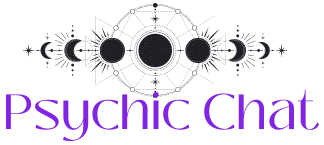Ouija board – psychic revelation or just plain old fun? Either way, the history is fascinating! It’s also a fun way to test your own psychic potential or perhaps hone the psychic abilities you’ve already discovered.
It all started in Pittsburgh, Pennsylvania – or did it?
On February 1, 1891, an advertisement was placed in the newspaper by the Pittsburgh-based novelty store Danziger & Company. No one knew it at the time, but this little print ad would spark the Ouija board craze that is now considered a classic in American culture. I mean, what American hasn’t heard of the Ouija board? For many Americans growing up, the Ouija board was considered taboo. It was an iconic counterculture that parents and grandparents scoffed at (unless you had cool ones), so of course every kid in America wanted to try it out!
Ouija Boards were the star of spooky high school sleepovers and late-night college get-togethers. They were also the central attraction of “girls’ night” for generations. Even today, over 120 years later, the Ouija board is still a household name, and yes, still a bit taboo. The Ouija board is now being taken more seriously as Americans become more psychically aware of and receptive to the spirit world.
The original 1891 advertisement was placed in the upper right corner of the twelfth page of the Pittsburg Dispatch. Below their large star logo, a headline read:
“OUIJA, or the beautiful talking board.”
It goes on to say, “The Ouija is without a doubt the most interesting, remarkable, and mysterious production of the nineteenth century.” It also says that the Ouija answers questions from the past, present and future with wonderful accuracy. The ad claimed that the Ouija board was the “link that unites the known with the unknown.” Although late 19th century advertisements were often more flowery than today’s advertisements, this advertisement stood out even for its time. It sold for $1.50, which was not a small amount at the time, but they basically flew off the shelf because curiosity is a powerful force.
Danziger & Company may have been the first store to run such an advertisement, but it was the Kennard Novelty Company that first spread the idea of a “Ouija” board, manufactured it, and patented it (more on that below). The company founder, the man who later took over the company, and the lawyer who got the patent are all credited as the “inventor” of the Ouija board, depending on the source. However, none of these individuals actually came up with the concept of using a board with the alphabet, numbers and “yes” and “no” to communicate with the spirits.
Where did the original ‘Talking Boards’ really originate?
Ouija boards, as we know them today, were an outgrowth of the spiritualist movement in America, England and the rest of Europe, which took place in the nineteenth century. People in this movement believed they could communicate with the dead. This also led to people asking the spirits for advice on all kinds of matters, from personal to political.
Psychic-led seances were all the rage in the 19th century and some psychics were known to use ‘talking boards’, also called ‘spirit boards’, to communicate with the spirits. In other words, although they weren’t called “Ouija” boards until Charles W. Kennard, an entrepreneur in the fertilizer industry, thought about mass producing them and patenting them. Spirit Boards were also used during this period as a kind of “do it yourself” séance, a way for a family or a few close friends to come together and communicate with their deceased loved ones.
Guess what? Spirit Boards actually go back much further!
In the 19th century, spirit boards were made from a flat piece of wood, engraved with the alphabet, numbers and other symbols and words. A smaller piece of wood, called a planchette, was used as a pointer so that the spirits could guide the medium’s hand in spelling words or numbers. Yes and no questions could also be answered in this way. This is a specialized type of ‘spirit writing’ or ‘automatic writing’ in which the person(s) touching the planchette serve as the medium through which the spirit ‘writes’ a message.
The predecessor of the spirit boards goes back to China, the origins were somewhere between 900 and 1100 AD. Instead of a wooden plank, flat boxes of sand were used. Sticks were used to move the planchette and spell Chinese characters by passing the sand through a sieve. The sticks were made of flexible wood, such as willow branches or peach branches, similar to a dowsing rod. Certain Chinese characters were associated with this type of ‘spirit writing’, such as the character for a phoenix bird. While one person acted as a medium moving the stick/planchette, another person interpreted the symbols and wrote down the message.
Fun facts about Ouija boards
Elijah Bond was an early investor in the Kennard Novelty Company, the original manufacturer of Ouija boards. He was also a lawyer and was tasked with patenting the ‘Ouija’. On May 28, 1890, he applied for a patent for the sign. However, none of the patent clerks wanted to give him a patent because they didn’t believe it worked. Of course, having a patent would provide potential buyers with proof that the board did indeed work, so Mr. Bond didn’t give up easily.
Luck would change for Mr. Bond when he called in his sister-in-law, a talented medium of some fame, to prove that the Ouija board did indeed work. The chief patent registrar told them that if they could use the board to determine his first name, which they did not know at the time, he would give them a patent. They went to work, placing their hands on the planchette and asking the Spirits to spell his name on the board. When they got it right, the head servant’s face turned pale, as if he had seen a ghost. True to his word, he immediately granted them a patent and then immediately left the building, visually shocked by the experience.
Robert Murch, a historian and collector of antique Ouija boards, searched for Elijah Bond’s grave for years. He was buried in an unmarked grave at Green Mount Cemetery in Baltimore, Maryland. When he finally found it, he raised money to place a large and stately headstone on his grave. On one side of the plate, the engraving was that of the original Ouija board design. It is so unique that it has now become a popular tourist attraction.
Final thoughts
Ouija board parties can be a fun way to spend an evening with family or friends (just take the necessary precautions if doing so during the Covid-19 pandemic). But while you may think it’s just a fun party game, don’t be surprised if you emerge as a true proponent of the Ouija board as a serious fortune-telling tool. Don’t forget that the spirits can talk to you through a Ouija board just as easily as tarot cards!
Do not you believe me? You can buy a Ouija board online for less than $20 and see for yourself. Don’t worry about being too ‘woo woo’. After all, America has been obsessed with the Ouija board for over a century. In fact, it even sold better than Monopoly! And… what have you got to lose? If you decide to experiment with a Ouija board, try to be open to all possibilities. Even if you don’t succeed, you will definitely have fun trying. But above all, be receptive to the gifts your enigmatic oracle gives you 😉






